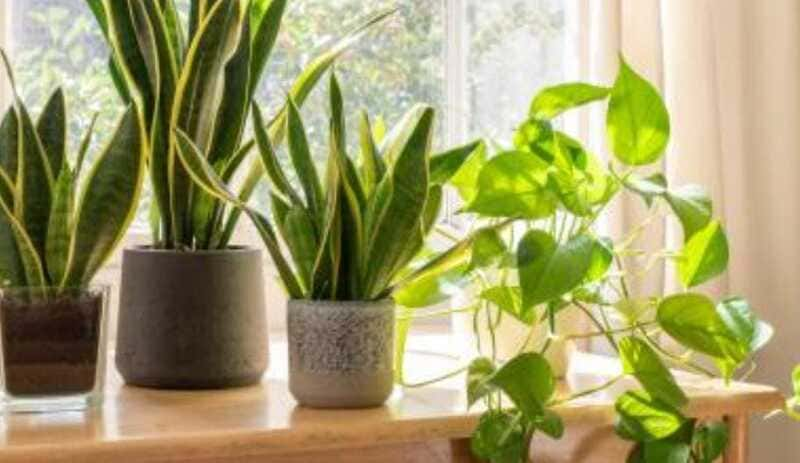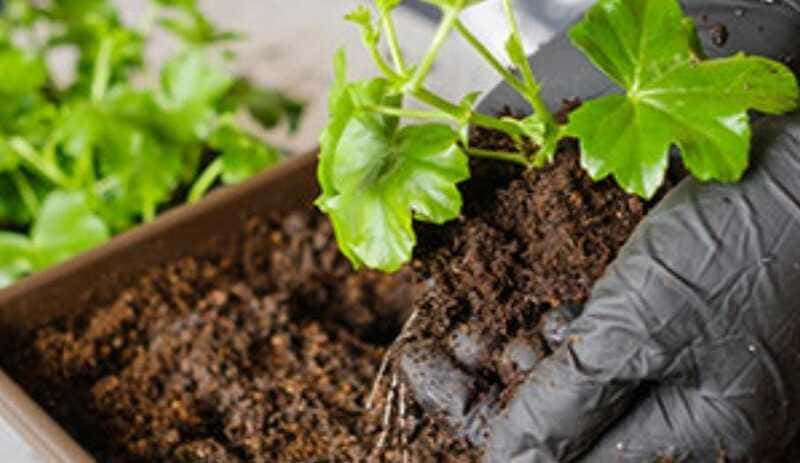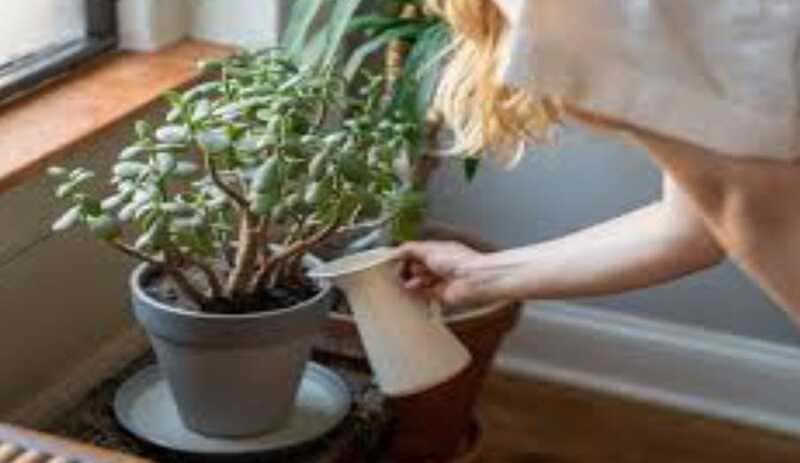The love of nature and the desire to enjoy beautiful plants and flowers need not be limited by the size of our spaces. Even if we live in cozy apartments, homes with compact yards or simply have a small corner to grow in, the world of small container gardening offers us an unlimited range of green possibilities.
Small container gardening is a creative and rewarding way to bring nature into our homes, balconies or terraces. With a little knowledge, planning and care, it is amazing what can be accomplished in these seemingly modest spaces. From lovely flowers and aromatic herbs to lush vegetables and small fruit trees, planters provide us with a unique opportunity to turn our intimate spaces into lively gardens.

In this article, we’ll explore the essential basics of how to successfully grow plants in small pots. We will learn how to select the right pots, how to choose the plants best suited to these environments, and how to care for them as they grow and flourish. In addition, we will discover practical tips and techniques to maximize the available space and create beautiful and harmonious compositions.
Choosing the right pots.
As urban living continues to expand and our outdoor spaces get smaller and smaller, growing plants in small pots has become a growing trend. These pots, designed to fit our cozy balconies, terraces or even windows, offer us a unique opportunity to create beautiful gardens in the middle of the city.
When it comes to how to grow plants in small pots, choosing the right pots plays a key role in the success of the cultivation. There are a variety of pot materials, sizes and designs available on the market, each with its advantages and challenges. When selecting the perfect pot, it is essential to consider the well-being of the plants and how they will adapt to their new compact home.
Pots come in a wide range of materials, and each offers unique characteristics that will affect the growth of our plants. Common choices include clay or terra cotta, plastic, ceramic, metal and fiberglass. Clay or terra cotta pots are popular because of their ability to retain moisture and their ability to allow roots to breathe. On the other hand, plastic pots are lightweight and easy to move, while ceramic pots add an elegant and aesthetic touch to our green spaces.

In the world of small planters, size matters. Choosing the right size will depend on the type of plant we wish to grow and the space available. It is important to remember that while it is tempting to choose small pots for tiny plants, limited space can restrict plant growth and affect long-term plant health. Therefore, it is advisable to select pots that provide sufficient space for proper root development and allow the plant to reach its full potential.
In addition to their functionality, pots can also become decorative elements in our homes and outdoor spaces. Planter designs vary from simple, modern options to more elaborate, ornate styles. By choosing the right design, we can complement the overall aesthetic of our surroundings and create visual harmony between the plants and their container.
Choosing plants suitable for small pots.
As we embrace the idea of how to grow plants in small pots, we enter a world full of green possibilities in small spaces. However, in order to achieve a thriving and healthy urban garden, it is critical to choose the right plants that are perfectly suited to this limited environment.
The key to success when growing plants in small pots lies in selecting species that are comfortable with the lack of space to expand their roots and fit the specific conditions offered by this compact habitat. Some species are especially suited to thrive in small pots, allowing us to enjoy their beauty and greenery without worrying about overgrowth.
Ideal plants for small pots are those that do not become invasive or aggressive with their roots and can be maintained at a manageable size over time. The following species are recommended for growing in small pots:
Succulents and Cacti: These plants are known for their ability to store water in their leaves or stems, making them highly drought tolerant and perfect for irrigation-controlled environments. With a wide variety of shapes and sizes, succulents and cacti add an exotic and sculptural touch to any space.
Aromatic Herbs: Herbs such as parsley, basil, thyme and mint are ideal for growing in small pots, as they don’t require much room to grow and provide a fresh and delicious touch to our home-cooked meals.
Annual Flowers: Annual plants such as petunias, begonias and geraniums are perfect for filling our pots with vibrant, attractive colors during the growing season. These flowers provide a wide variety of options to beautify our spaces.
Ferns: Ferns are a lovely choice for adding a touch of elegance and freshness to our indoor or shady outdoor spaces. They are low-maintenance plants and their leafiness adapts very well to small pots.
Climbing Plants: Some climbing species, such as ivy or jade vine, are suitable for hanging in pots and create a beautiful cascading effect. They can also decorate walls and vertical surfaces.
Strawberries: Strawberries in small pots are both a visual and gastronomic delight. Their small red fruits are attractive, and their sweet, juicy flavor is a reward for the grower.
Ideal substrate preparation.
Proper substrate preparation is a cornerstone of successful small potted plant growing. How to grow plants in small pots involves providing the roots with an environment conducive to growth and absorbing the nutrients necessary for optimal development.
The ideal potting soil should balance water retention with efficient drainage. A well-structured mix will allow water to be maintained at levels suitable for the plants’ needs, avoiding waterlogging that can lead to root rot.

A common recipe for preparing the ideal substrate includes garden soil, coarse sand and organic matter such as peat or compost. The garden soil provides basic nutrients, the sand improves drainage and the organic matter retains moisture, creating a balance that supports optimal plant growth.
In addition, specific fertilizers and nutrients can be incorporated to supplement the substrate and ensure that plants have access to the essential elements for their development. Slow-release fertilizers are especially useful in small pots, as they provide nutrients gradually, avoiding overfeeding that could damage the roots.
Another option to improve the substrate is the incorporation of perlite or vermiculite, which improve the soil structure and allow better aeration of the roots.
It is important to keep in mind that different types of plants have specific substrate requirements, so it is necessary to adapt the mix according to the needs of each species. For example, succulents and cacti prefer substrates with higher drainage capacity and lower moisture retention, while houseplants may require mixtures richer in organic matter.
Adequate watering.
Proper watering is a critical factor for success in growing plants in small pots. Since growing plants in small pots means that their access to water is limited to the space contained in the container, it is essential to understand how to provide the proper amount and frequency of water to avoid both overwatering and under watering.
First, it is crucial to determine the specific needs of each plant. Some species require more water than others, while some are more drought resistant. Observing the signs that plants give us, such as wilting leaves or the dry appearance of the substrate, will help us assess when they need water.

A common mistake is overwatering, which can be just as detrimental as under watering. Too much water can saturate the substrate and drown the roots, leading to disease development and plant rot. To avoid this, it is important to ensure that the pots have good drainage and that excess water can easily drain away.
The amount of water to be administered at each watering will depend on several factors, such as the size of the pot, the type of plant and the environmental conditions. Generally, it is better to water heavily but less frequently than to water small amounts more consistently. This allows water to reach the deeper layers of the substrate and promotes stronger and deeper root growth.
An effective technique for watering is to completely submerge the pot in a container of water until it stops bubbling, making sure that the substrate absorbs enough water. Then, let the excess water drain away to prevent the roots from being constantly submerged.
In addition, watering should be adjusted according to weather conditions. On warmer days, plants may require more water, while in cold or rainy periods, it is necessary to reduce the frequency of watering.
Location and light: How to optimize sun exposure and pot placement.
Location and light play a crucial role in the successful growing of plants in small pots. Since growing plants in small pots means that not all species can adapt to every location, it is critical to understand how to optimize sun exposure and pot placement to ensure healthy, lush growth.
First, it is essential to assess the light conditions in the space where the pots will be placed. The amount of direct sunlight, indirect sunlight or shade will influence the choice of the most suitable plants for that location. Observing how many hours of sunlight the area receives during the day will give us an idea of what type of plants will thrive best there.
For those spaces with plenty of direct sunlight, it is important to select plants that are tolerant of intense sun. Plants such as succulents, cacti and some aromatic herbs are ideal for these areas, as they can withstand hotter, drier conditions.
In contrast, areas with shade or indirect light are more suitable for plants that prefer a cooler, more humid environment. Ferns, begonias, calatheas and some houseplants are good choices for these locations, as they can thrive in cooler, less bright conditions.
In addition to the amount of light, we should also consider the direction in which the light source is located. For example, south-facing windows tend to receive a greater amount of direct sunlight during the day, while north-facing windows can provide softer, more constant light.
To optimize sun exposure, we can rotate pots periodically so that all parts of the plant receive light evenly and avoid uneven growth. In addition, placing pots on shelves or ledges near windows can improve access to sunlight and maximize available space.
It is important to remember that balance is key when locating pots. While sunlight is essential for plant growth, we must also be careful not to expose plants to direct sunlight for prolonged periods on very hot days, as this can cause leaf burn.

